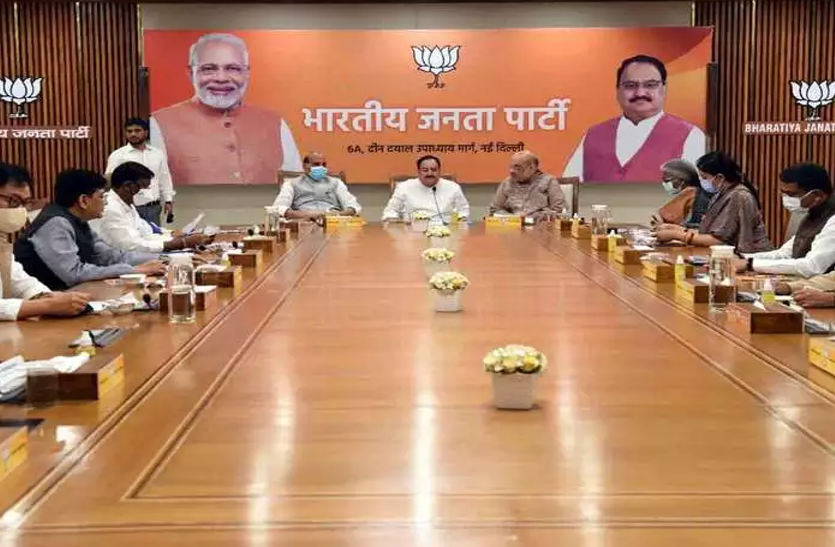New Delhi: The calendar year 2022 is politically important in more ways than one. State assembly polls are due in seven states including Uttar Pradesh and Gujarat – the two most prestigious battlegrounds for Prime Minister Narendra Modi.

Assembly polls are due by March in Uttar Pradesh, Punjab, Manipur, Goa, and Uttarakhand and, for Gujarat and Himachal Pradesh in December 2022.
In between by June-July, political temper will be yet again high about the Presidential polls and also for election to the office of the Vice President and chairperson of Rajya Sabha.
BJP president J P Nadda met a group of cabinet ministers, senior party leaders, and key office-bearers on Saturday (June 26) in a fresh round to take stock of the party’s poll preparedness in these states.
Of course, the party leaders including, Home Minister Amit Shah and Defence Minister Rajnath Singh, the former party chiefs, and others had reviewed BJP Karyakarta’s national mood and readiness to fight the anticipated third wave of the Covid-19 pandemic.
Finance minister Nirmala Sitharaman, Railways and Commerce minister Piyush Goyal, Textiles minister Smriti Irani, Petroleum minister Dharmendra Pradhan, and Sports minister Kiren Rijiju also attended the meeting.
Nadda also chaired another meeting of BJP’s national general secretaries and during the day announced the appointments of new state unit presidents for Assam and poll-bound Manipur.
The move to appoint a woman Sharda Devi as Manipur state unit chief of BJP is significant.
During the last two weeks, Prime Minister Narendra Modi has also reviewed works done by key central ministries.
In Mr. Modi’s native state Gujarat, the BJP has been in power since 1998. Congress tasted power in the state under Chhabildas Mehta between February 17, 1994, to March 13, 1995.
Between 1995 and 1998, Keshubhai Patel (BJP), Shanker Singh Vaghela, and Dilip Parikh (both RJP) were in power before Keshubhai again came in 1998, and subsequently Narendra Modi took over the reins on Oct 7, 2001.
“In Gujarat, we face an anti-incumbency factor as a law of the average. But we have to prove yet again that we are above average,” says a party leader, who knows things about the party’s strategies and policies.
The going will be tough in other states such as Punjab and Uttarakhand too. In the two smaller states, Manipur and Goa, the saffron party, which is currently sharing power with regional allies, must fine-tune its policies to account for a variety of circumstances.
In UP, a lot of things have changed on the ground in the last four years, and some of them have made things more complex if not challenging. But, the BJP has some advantages too.
Before the 2017 assembly elections, Yogi Adityanath was not on the scene. Now he is the face of the party and also a neo-Hindutva mascot.
In 2017 polls, Ram Temple at Ayodhya and Kashmir were still part of BJP’s electoral campaign pitch.
Now, these two poll pledges have lost the sheen as ‘election issues’. Article 370 has been done away with and the Ram Temple is now a reality.
So the BJP’s game plan for the next year’s electoral battle in the country’s most populous state would be development merged with the strong Hindutva plank.
This would importantly also mean taking care of hiccups like ‘conversion’ to both Muslims and Christians.
The recent ‘conversion’ row allegedly linked to Islamic radical Zakir Naik makes the challenge more mystifying.














Comments